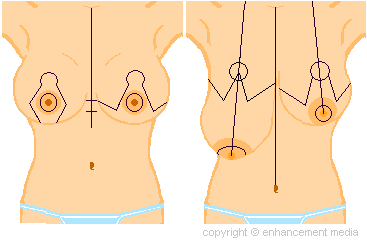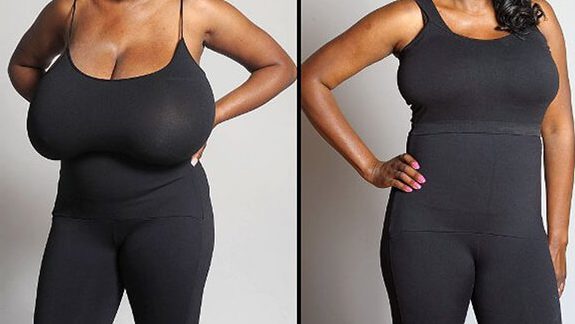Breast Reduction Surgery in Iran
Breast Reduction Surgery in Iran is a common procedure that can be performed to reduce the size and lift the shape of breasts that are too large and saggy. This surgery can improve both the physical and emotional well-being of individuals who are unhappy with the size and shape of their breasts.
Indications for Breast Reduction Surgery
Breast Reduction Surgery in Iran is typically recommended for individuals who:
- Have large and heavy breasts that cause physical discomfort, such as back pain, neck pain, and shoulder pain.
- Experience difficulty participating in physical activities due to the size and weight of their breasts.
- Have skin irritation or rashes under their breasts due to excessive sweating or chafing.
- Have difficulty finding clothes that fit properly.
- Feel self-conscious or embarrassed about the size and shape of their breasts.
Types of Breast Reduction Surgery
There are several different types of breast reduction surgery, each with its own advantages and disadvantages. The most common types of Breast Reduction Surgery in Iran include:
- Vertical Scar Technique: This technique involves making an incision around the areola, down the center of the breast, and into the inframammary fold (the crease beneath the breast). This technique allows for the removal of a large amount of tissue and can be used to lift the breasts significantly. However, it also results in a more noticeable scar.
- Inverted-T Scar Technique: This technique involves making an incision around the areola, down the center of the breast, and then horizontally across the inframammary fold. This technique allows for the removal of a moderate amount of tissue and can be used to lift the breasts moderately. It also results in a less noticeable scar than the vertical scar technique.
- Periareolar Scar Technique: This technique involves making an incision only around the areola. This technique is typically used for smaller reductions and does not lift the breasts as much as the other techniques. However, it results in the least noticeable scar.
Risks and Complications of Breast Reduction Surgery
As with any surgery, Breast Reduction Surgery in Iran carries some risks and potential complications. These include:
- Bleeding
- Infection
- Scarring
- Loss of sensation in the nipples
- Asymmetry
- Unsatisfactory results
It is important to discuss these risks and complications with your surgeon before deciding to have breast reduction surgery.
Recovery from Breast Reduction Surgery in Iran
The recovery time after breast reduction surgery varies depending on the individual and the extent of the surgery. Most people can expect to take 1-2 weeks off from work and avoid strenuous activity for 4-6 weeks. It is important to follow your surgeon’s instructions carefully during the recovery period to ensure optimal healing.
Conclusion
Breast Reduction Surgery in Iran can be a life-changing procedure for individuals who are unhappy with the size and shape of their breasts. If you are considering breast reduction surgery, it is important to consult with a qualified plastic surgeon to discuss your options and ensure that you are a good candidate for the procedure.

Cutting Methods in Breast Reduction Surgery in Iran
There are several different cutting methods used in breast reduction surgery, each with its own advantages and disadvantages. The specific cutting method chosen will depend on the individual’s anatomy, the desired outcome, and the surgeon’s preference.
Common Cutting Methods
- Vertical Scar Technique: This technique involves making an incision around the areola, down the center of the breast, and into the inframammary fold (the crease beneath the breast). This technique allows for the removal of a large amount of tissue and can be used to lift the breasts significantly. However, it also results in a more noticeable scar.
- Inverted-T Scar Technique: This technique involves making an incision around the areola, down the center of the breast, and then horizontally across the inframammary fold. This technique allows for the removal of a moderate amount of tissue and can be used to lift the breasts moderately. It also results in a less noticeable scar than the vertical scar technique.
- Periareolar Scar Technique: This technique involves making an incision only around the areola. This technique is typically used for smaller reductions and does not lift the breasts as much as the other techniques. However, it results in the least noticeable scar.
- Liposuction-Assisted Breast Reduction: This technique involves using liposuction to remove fat from the breasts before performing a traditional breast reduction. This can be a good option for individuals who have a lot of fatty tissue in their breasts.
Factors Influencing Cutting Method Choice
- Amount of tissue to be removed: The amount of tissue that needs to be removed will determine the size and location of the incisions.
- Desired breast shape: The desired breast shape will also influence the cutting method choice. For example, if the patient wants a more lifted breast, the surgeon may choose a vertical scar technique.
- Patient’s anatomy: The patient’s anatomy, such as the size and shape of their breasts, will also play a role in the cutting method choice.
- Surgeon’s preference: The surgeon’s experience and preference will also be a factor in the cutting method choice.
Considerations for Cutting Methods
- Scarring: All cutting methods will result in some scarring. The location and visibility of the scars will vary depending on the cutting method chosen.
- Breastfeeding: Some cutting methods may make breastfeeding more difficult or impossible. It is important to discuss this with your surgeon before deciding on a cutting method.
- Sensation: Some cutting methods may result in a loss of sensation in the nipples. This is usually temporary, but it can be a concern for some patients.
Conclusion
The choice of cutting method in breast reduction surgery ( Mammoplasty ) is an important decision that should be made in consultation with a qualified plastic surgeon. The surgeon will consider the individual’s anatomy, desired outcome, and other factors to determine the best cutting method for their needs.
Care After Breast Reduction Surgery
Proper care after Breast Reduction Surgery in Iran is crucial for ensuring a smooth recovery and achieving optimal results. Here’s a comprehensive guide to post-operative care:
In the Hospital:
You’ll be monitored in the recovery room for several hours.
Pain medication will be administered to manage discomfort.
A surgical bra will be provided to support your breasts and minimize swelling.
Drainage tubes may be inserted to remove excess fluid. These are typically removed after a few days.
At Home:
- Rest for the first 24 hours.
- Avoid strenuous activities and lifting heavy objects for 4-6 weeks.
- Wear the surgical bra continuously for the first few weeks, as instructed by your surgeon.
- Avoid showering or swimming for 1-2 weeks, or as advised by your doctor.
- Protect your incisions from sunlight for 6-12 months to minimize scarring.
- Take prescribed pain medication as needed.
- Monitor for signs of infection, such as fever, redness, swelling, or discharge from the incisions. Contact your doctor immediately if you experience any of these symptoms.
- Attend follow-up appointments as scheduled to monitor your progress and address any concerns.
Additional Tips:
- Apply cold compresses to reduce swelling.
- Elevate your arms above your head periodically to promote drainage.
- Sleep on your back or side, avoiding pressure on your breasts.
- Maintain a healthy diet and stay hydrated to support healing.
- Avoid smoking and alcohol, as they can hinder the healing process.
- Don’t hesitate to contact your doctor with any questions or concerns.
Recovery Timeline:
Most discomfort subsides within a few days.
You can return to work after 1-2 weeks, depending on your job demands.
Strenuous activities can be resumed after 4-6 weeks.
Full recovery and final results may take several months.
Scar Management:
Scars will gradually fade over time.
Apply silicone gel or scar cream as recommended by your doctor to minimize their appearance.
Avoid excessive sun exposure to prevent hyperpigmentation.
Long-Term Care:
Wear a supportive bra, especially during exercise.
Maintain a healthy weight to prevent stretching of the skin.
Schedule regular checkups with your doctor to monitor your breasts and address any concerns.
Remember, every individual heals differently. Follow your surgeon’s specific instructions and don’t hesitate to reach out if you have any questions or concerns.
Recovery Process After Large Breast Reduction Surgery
The recovery process after large Breast Reduction Surgery in Iran can be longer and more involved than for smaller reductions. However, with proper care and patience, most patients can expect a full recovery within a few months.
Immediate Post-Operative Period:
You will spend the first night in the hospital for observation and pain management.
Drainage tubes may be inserted to remove excess fluid. These are typically removed after a few days.
You will be given a surgical bra to wear for support and compression.
Pain medication will be prescribed to manage discomfort.
First Week:
You will experience some pain, swelling, and bruising. This is normal and will gradually subside.
You may need to take pain medication for several days.
You will be able to shower, but avoid soaking the incisions.
You should avoid strenuous activities and lifting heavy objects.
You will need to sleep on your back or side, avoiding pressure on your breasts.
Second Week:
The pain and swelling will continue to decrease.
You may be able to return to work, depending on your job demands.
You can start light exercise, such as walking.
You should continue to wear the surgical bra for support.
Third and Fourth Weeks:
You will continue to heal and regain strength.
You can gradually increase your activity level.
You can start driving again, if you are comfortable.
You can begin wearing a regular bra, but choose one that is supportive and comfortable.
Months 2-3:
Most of the swelling and bruising will have resolved.
You should be able to resume most of your normal activities.
You will continue to see improvement in the shape and appearance of your breasts.
Months 3-6:
Your breasts will continue to soften and settle into their final shape.
You may notice some numbness or tingling in the nipples, which is usually temporary.
The scars will gradually fade and become less noticeable.
Long-Term Recovery:
You will need to continue wearing a supportive bra, especially during exercise.
You should maintain a healthy weight to prevent stretching of the skin.
Schedule regular checkups with your doctor to monitor your breasts and address any concerns.
Tips for a Smooth Recovery:
Follow your surgeon’s instructions carefully.
Get plenty of rest.
Eat a healthy diet and stay hydrated.
Avoid smoking and alcohol.
Don’t hesitate to contact your doctor with any questions or concerns.
Remember, every individual heals differently. The recovery process may vary depending on the extent of the surgery, your overall health, and other factors. Be patient and listen to your body.

